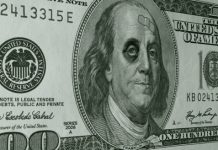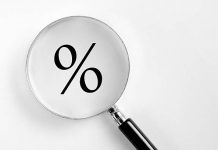Markets
Central bank meetings in Japan, Sweden and Hungary today were nothing but some minor distraction ahead of tomorrow’s Federal Reserve gathering. The Fed is expected to stick to the view that a transient increase in inflation doesn’t warrant a premature reversal of its very accommodative monetary policy. For the time being, we think markets will take that message into stride, but pressure will be building on the Fed in coming months as the economy shifts into highest gear. In absence of EMU eco data, markets actually didn’t really go anywhere. Record breaking rallies in base and ferrous metals nevertheless keep investors on the edge when it comes to reflationary spirits. Daily yield changes are small, but 10y European benchmark yields remain close to key resistance areas (-0.25% for Germany and 0.10% for swap). In the meantime, the US 10-yr yield is making yet another attempt to regain lost support at 1.59%. US Treasuries slightly underperform German Bunds in a daily perspective. Apart from tomorrow’s US central bank gathering, markets still have to cope with a $62bn 7-yr Note auction tonight. US yields add 0.5 bps (3y) to 1.4 bps (10y) in a daily perspective. 10y yield spread changes vs Germany widen by up to 3 bps for Italy. The country is active in the syndicated bond market today with $-denominated benchmark deals (3y & 30y).
• European stock markets trade with losses of around 0.3% ahead of the start of US trading. Pre-market earnings were mixed to somewhat disappointing, but will be overshadowed by the outcome of tech behemoths Microsoft and Alphabet after-market. US stock markets take an hesitant start as well.
The dollar tried to extend yesterday’s short term bottoming out attempt, but already fell out of gas around European noon. The trade-weighted greenback currently changes hands near opening levels of 90.90. EUR/USD followed a similar trajectory to an intraday low of 1.2057 before returning to the 1.2080 zone. EUR/USD 1.21 remains key resistance, unlocking the early January recovery high of 1.2349 when broken. USD/JPY is today’s exception to the rule with the pair up at 108.30 from a 108.08 open. It’s a bridge to far to dedicate the move to this morning’s softer BOJ inflation outlook. Technically, the 108 zone offered support via this year’s upward trend line. EUR/GBP’s intraday trading pattern is an undecisive one, hovering listless near 0.8690.
News Headlines
German Economy minister Altmaier announced that the German government raised its growth forecast for this year to 3.5% from 3.0% as especially household consumption is expected to revive economic growth. The recovery is expected to continue next year with growth seen at 3.6%. The economy is expected to reach its pre-pandemic level in 2022 at latest. Altmaier labelled the new forecasts as a careful approach to avoid disappointments. Inflation is expected at 2.2% this year and 1.5% next year. The economy minster acknowledged risks to growth coming from (chip) shortages, but the exact negative impact is difficult to quantify at this stage.
The Swedish Riksbank as expected kept its policy unchanged even as the economic outlook now is slightly brighter in February. The central bank upwardly revised 2021 growth from 3.0% to 3.7%. and expects the economy to return to a normal level toward the end of the year. Growth for next year (3.6%) and 2023 (2.0%) was slightly downwardly revised. However, an ongoing subdued forecast for inflation justifies policy to remain very accommodative for a long time. CPI Inflation is expected to remain below 2% through 2023. In this context the policy rate is still seen at 0% in early 2024. The Riksbank will continue to buy bonds within the current envelope of SEK 700bn. This envelope probably will be fully utilized by the end of this year, but the size of the balance sheet will be













